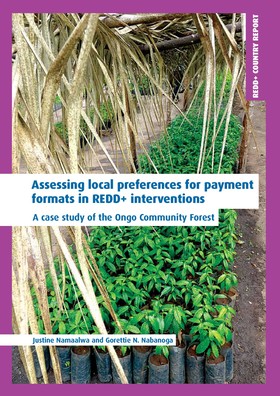Assessing local preferences for payment formats in REDD+ interventions: A case study of the Ongo Community Forest

The government of Uganda has over time been actively engaged in ensuring the sustainable utilisation of its forestry resources. This has been undertaken by different players including the national forestry sector, forest-neighbouring communities and private individuals owning forested land. Different complementary policies and legal instruments have been implemented or drafted to facilitate strategies for achieving this.
In addition to the prevailing policy/legal provisions, different initiatives are underway to explore REDD+ architecture including benefit-sharing mechanisms and the types and levels of participation by the different players in REDD+ processes. The Environmental Conservation Trust of Uganda (ECOTRUST), a non-profit environmental conservation organisation, is in the process of implementing a REDD+ pilot project in some community forests of Masindi District.
As part of a Norad-funded project focusing on poverty and sustainable development impacts of REDD architecture, a research team from Makerere University in collaboration with ECOTRUST conducted a two-stage process to investigate payment formats and undertake choice experiments in the Ongo community. The process was guided by methodologies and field protocols developed by the International Institute for Environment and Development (IIED) and the University of Life Sciences (UMB).
The fieldwork was conducted during March and April 2013 across four villages found in Kasenene Parish, Budongo sub-County in Masindi District: Abangi, Onieni, Ogadra and Kibali. These villages surround a communally owned forest, the Ongo Community Forest, which is located about 54km from Masindi Town off Masindi–Butiaba Road covering an approximate area of 192 hectares. The main livelihood of the community members is subsistence farming, growing mainly maize, cassava, millet, beans, rice, sweet potatoes, bananas and groundnuts. In addition, the main cash crops in the area are tobacco and rice.
Cite this publication
Available at https://www.iied.org/g03711






